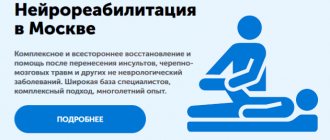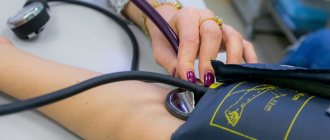Rehabilitation after surgical removal of hemorrhoids is an important stage in the treatment of the disease. Carrying out surgical intervention is only the beginning of a difficult path in the fight against pathology. The duration of the recovery period always depends on the type of operation, the degree of hemorrhoids and the individual characteristics of the body. Compliance with all rehabilitation measures in the hospital and at home ensures the patient’s rapid recovery, helps prevent relapse, and return to a full life.
How long does the recovery period last?
How long do they stay in the hospital after excision of cavernous formations in the rectum? The duration of the recovery period after surgery to remove hemorrhoids always depends on the type of intervention and the characteristics of the pathology. After an open hemorrhoidectomy according to Milligan-Morgan, the duration of rehabilitation is 1–1.5 months, with a closed hemorrhoidectomy – 1–2 weeks. After intervention using the Longo method, recovery lasts 7–10 days in the absence of complications. If undesirable consequences occur, the recovery period may take up to 2-3 weeks.
As for minimally invasive techniques, such as laser therapy, infrared coagulation, cryotherapy, disarterialization and others, the recovery period is reduced to several days. We must not forget that the duration of the rehabilitation period directly depends on the correct implementation of the doctor’s recommendations. Patients who refuse to follow the necessary measures often develop complications, leading to a long and painful recovery.
Briefly about the main thing
Excision of hemorrhoids is a traditional surgical operation, which is performed at such stages of the development of the disease when low-traumatic techniques are no longer indicated.
Traditional surgery is a serious procedure, which is characterized by a record low percentage of pathological recurrences. Doctors recommend removing pathological elements in a timely manner - this will completely restore health and prevent the development of numerous complications of hemorrhoids.
Surgical removal of nodes in City Clinical Hospital No. 31 is performed under anesthesia in a hospital setting. To guarantee the success of the operation, you should first cleanse the intestines and follow all the doctor’s recommendations during the rehabilitation period.
Main stages of rehabilitation
Rehabilitation is a series of activities aimed at maximizing the restoration of body functions that were impaired as a result of injuries, serious illnesses or surgery. The postoperative period after hemorrhoid removal includes several stages. These include:
- taking medications prescribed by a doctor;
- diet;
- proper physical activity;
- maintaining personal hygiene.
Important! Each of the points is of irreplaceable importance. Only an integrated approach helps to achieve the desired result and prevent relapse of the pathology.
Where to have the operation?
First of all, you need to know that the appointment for a serious procedure is given by a doctor. The operation is a solution to a long and painful problem.
You can make an appointment with a doctor at our family clinic. We successfully treat hemorrhoids at all stages. Patients note discomfort during the procedure and a difficult postoperative period, but subsequently they get rid of pain in the rectal area. In our clinic, surgery is prescribed only in extreme cases, if previous treatment does not bring the desired result. Preparation is carried out in compliance with all the necessary requirements, and after its completion, patients receive detailed instructions on wound care and recommendations on proper nutrition.
What problems does the patient face?
Often the consequences after hemorrhoid removal are the most negative. Each patient should be prepared for possible complications and have the necessary information to overcome them.
After surgery to remove hemorrhoids, the patient encounters various complications that have to be dealt with during the rehabilitation period
Acute pain
After hemorrhoid surgery, most patients experience severe discomfort and pain. This is explained by the end of the anesthesia. Many patients experience such intense pain that it is impossible to do without narcotic analgesics. The doctor may prescribe Omnopon, Promedol, Tramadol. People with less severe pain are prescribed Diclofenac, Rofecoxib, Nimesulide and other medications.
Urinary dysfunction
In the postoperative period, a complication such as acute urinary retention sometimes occurs. Men are more often affected by the disorder. This is due to the anatomical features of the genitourinary system. The use of a catheter helps to cope with this unpleasant symptom.
Suppuration of wounds
Purulent lesions often occur with severe inflammation and the addition of a bacterial infection. For such patients, antibacterial therapy and treatment of sutures with special antiseptic solutions are indicated.
Bleeding
Blood from the anus is a common complication during the recovery period. Bleeding may occur immediately after the intervention or several hours or even days after the operation. The reason for this phenomenon is damage to the seams by feces. As a result, wounds and cracks form, from which blood flows. The problem is solved by re-suturing or using a sponge treated with adrenaline.
Narrowing of the anus
This complication develops against the background of defects in suturing. In this case, the patient experiences pain during defecation, a feeling of incomplete emptying, and the excreted feces have the shape of a narrow ribbon. To get rid of the problem, medication, a special diet, and sphincter massage are used. If there is no proper therapeutic effect, hole repair may be prescribed.
Rectal prolapse due to valve insufficiency
Valve weakness is a very rare complication that occurs after surgery on patients with particularly severe pathology. Depending on the intensity of the weakening, the patient is prescribed a medicinal or surgical solution to the problem during the rehabilitation period. Among the auxiliary methods are massage, diet, and exercise.
Rectal prolapse is a rare but very unpleasant complication.
Fistula formation
Fistulas are holes that appear as a result of severe inflammation or suppuration. This complication is often diagnosed several months after surgery to remove hemorrhoids. In this case, pain may occur and body temperature rises. The main danger of fistulas is the addition of a bacterial infection, deformation of the anal valve, and scarring of the walls of the rectum.
Treatment of fistulas is carried out mainly by surgery, since conservative therapy rarely gives the desired therapeutic effect. Recovery after fistula repair takes 5–7 days, after which the patient can go home.
During rehabilitation after hemorrhoid removal, the patient may encounter many unpleasant consequences. Only a competent medication approach and strict adherence to all recommendations will help cope with complications and prevent serious complications.
Important! The success of treatment depends not only on the actions of medical personnel, but also on the efforts made by the patient himself.
Diagnosis of hemorrhoidal disease
1. A history and physical examination should be performed, taking into account the extent and duration of symptoms and risk factors. Recommendation level 1C.
The diagnosis of hemorrhoids is confirmed clinically in most cases. The evaluation should begin with a medical history, paying close attention to symptoms that suggest hemorrhoids, as well as risk factors such as constipation,6 followed by a physical examination. Painless bleeding during bowel movements with periodic prolapse of nodes are key signs of internal hemorrhoids. It is necessary to pay special attention to the severity, severity and duration of symptoms, both with bleeding and prolapse of nodes, with perineal hygiene and the presence of pain.
The amount of fiber intake, the frequency and nature of stool, and difficulty with bowel movements should also be clarified, since constipation is one of the most important risk factors for hemorrhoids.4,5 The presence of symptoms of fecal incontinence may influence the choice of treatment. Physical examination should be performed in the knee-elbow or lateral decubitus position with visual inspection of the anus, as well as digital rectal examination to exclude other diseases and assess the integrity of the sphincter. In addition, performing a straining test can help diagnose prolapsed hemorrhoids and help rule out rectal prolapse. To assess the topography of the affected hemorrhoids, it is necessary to perform anoscopy.6 The classification of internal hemorrhoids located above the dentate line is presented in Table 1. This classification allows you to select the desired treatment method. Laboratory tests are most often not required to make a diagnosis.
General principles of rehabilitation
In medical practice, there are general rules for recovery after surgery to remove hemorrhoids. These principles apply to such types of surgical interventions as open, closed hemorrhoidectomy or removal of hemorrhoids using the Longo method.
The following measures will help you recover quickly after surgery:
- Bed rest is recommended during the first few days;
- You cannot make sudden movements or strain your abs;
- You should play sports with your doctor’s permission 10–15 days after the intervention. This could be walking in place, breathing exercises;
- Be sure to maintain personal hygiene. After defecation, the anal area should be washed with cool water. The paper should be soft, this will help prevent damage to the mucous membrane;
- patients whose work activity involves sitting at a desk for a long time are recommended to use a special pillow - a ring;
- sexual relations will be allowed 2-3 weeks after the removal of the cones. Anal sex is completely prohibited.
These and some other recommendations from a proctologist will help you quickly forget about the unpleasant consequences of hemorrhoids.
Indications for traditional surgical methods
Surgical removal of chronically enlarged hemorrhoids is performed when minimally invasive techniques are technically difficult to implement or are doomed to failure due to the increased risk of relapse.
The most popular indications for excision with a scalpel: • Stage IV of the disease (nodes cannot be moved into the rectal cavity); • Stage III with large nodes (hemorrhoids can be reduced by hand in a warm bath); • a significant number of pathological elements; • presence of complications (necrosis, thrombosis, bleeding, etc.).
The decision to perform surgical excision is made on an individual basis. This takes into account the condition of the terminal intestine and adjacent organs, as well as the age and general health of the patient. To clarify all the data, it will be necessary to undergo a diagnostic examination.
Nutritional Features
The rehabilitation period after surgical treatment of hemorrhoids necessarily includes nutritional correction. Following a diet helps prevent constipation, flatulence and other digestive disorders that can negatively affect the patient's recovery.
Diet is an integral part of rapid recovery after surgery.
Dietary recommendations include the following:
- the diet should include all necessary vitamins and minerals;
- You can eat in small portions, 5-6 meals per day are recommended;
- Food should be chewed thoroughly and try not to drink during meals;
- Among the cooking methods, it is better to choose stewing, boiling or baking.
For quick recovery, healing of postoperative sutures, and normalization of the digestion process, you should give up some foods and replace them with healthy foods.
Allowed dishes during the recovery period
On the first day of rehabilitation after surgery, it is advisable to refuse to eat, since bowel movements in the first 24 hours are undesirable. In the following days, be sure to include in your diet dishes containing large amounts of moisture, fiber, carotene and other substances necessary to restore health.
Recommended Products:
- buckwheat, oatmeal, wheat porridge;
- broccoli, carrots, celery, tomatoes, beets;
- low-fat fermented milk products;
- steam omelettes and casseroles;
- blueberries, melons, apricots;
- vegetable soups and purees;
- lean meats;
- herbal teas, natural juices, compotes.
Cabbage and legumes are indicated for those patients in whom these products do not cause severe gas formation. They contain large amounts of iron, protein and vitamins, which help ease bowel movements.
Important! Proper nutrition must be observed not only during the recovery period after surgery, but throughout life to prevent relapse.
Prohibited Products
Surgery to remove hemorrhoids is very stressful for the body. For a speedy recovery, it is important to remove excess stress from the digestive system and exclude the following dishes from the diet:
- fatty types of fish, meat;
- hot seasonings, sauces, ketchups, marinades;
- rich meat broths;
- semolina, rice porridge;
- whole milk;
- chocolate, baked goods, fresh hot pastries;
- vegetables containing coarse fiber (fresh onions, garlic, mushrooms, radishes, cucumbers, sorrel, spinach);
- strawberries, raspberries, kiwi and other fruits with small seeds;
- strong tea, coffee, alcoholic, carbonated drinks.
Recommendations for nutrition during the rehabilitation period include maintaining the correct drinking regime. A person should drink about 2 liters of clean water per day.
Proper drinking regime is the key to successful recovery and restoration of body functions
The amount of fluid is calculated individually for each patient depending on body weight. Usually calculations are made using the formula 400 mg of water per 10 kg of weight. Exceptions include patients with impaired renal function and certain other pathologies.
Preparing for hemorrhoid excision
Diet
Diet is necessary to fully cleanse the intestines and prevent unwanted inflammatory reactions. Three days before surgery, foods that contribute to the formation of gases in the intestines, as well as dishes that can negatively affect stool are prohibited: • legumes; • cabbage; • fresh vegetables and fruits; • juices, mineral water, alcohol; • sweet dishes; • spices, marinades, pickles; • rice, semolina; • smoked products.
Liquid soups, dietary meat, fish, and mashed potatoes are recommended. The volume of fluid consumed is increased to 2 liters per day.
The last meal should be no later than 12 hours before surgery, and the last drink of water no later than 8 hours.
What to do
If you are going to undergo anesthesia, you need to visit a dentist . Sick and loose teeth should be removed.
During your consultation with the operating surgeon, you should talk about cases of drug intolerance. If you are forced to use any medications, be sure to tell your doctor.
Three days before surgery, you must stop taking any medications that affect blood clotting (ibuprofen, aspirin, birth control pills).
On the eve of the operation, the intestines are cleansed using a saline laxative such as Fortrans, which is taken at about four o’clock in the evening. It will be necessary to prepare a solution in accordance with the weight according to the formula specified in the instructions and drink one glass every fifteen minutes (3-4 hours). Bowel movements will begin a maximum of two hours after drinking the last glass of solution.
The procedure can be replaced by a double cleansing with an enema (in the evening and in the morning three hours before the operation) or a Microlax microenema.
Physical activity
Recovery after hemorrhoid removal is impossible without physical activity. 5–7 days after the intervention, the patient is recommended to sit, stand up, and walk around the hospital ward. This will help restore metabolic processes, which is important for the rapid healing of sutures, preventing the formation of hemorrhoidal fimbria, and general restoration of the body.
Intense physical activity, heavy lifting and strength sports are completely excluded. You cannot engage in cycling or exercise on machines. It is useful for patients to walk and perform breathing exercises on the recommendation of the attending physician. Daily walks in the fresh air will help you recover quickly.
Hygiene rules
After removal of hemorrhoids, hygienic care of the anus is of great importance. The patient needs to wash twice a day with warm water and baby soap. Linen should be soft, rough seams and synthetic materials are not allowed. After bowel movements, doctors recommend rinsing the anus with cool water. This will help increase vascular tone and stimulate blood flow from the tissues of the rectum.
By observing hygiene measures, many undesirable consequences can be prevented.
In order to not only remove dirt during the washing process, but also get maximum benefits, you can use herbal decoctions. Plants such as chamomile, string, nettle, yarrow, and St. John's wort are suitable for this. With their help, you can relieve pain, inflammation, and disinfect the treated area. Decoctions can be used for washing or added to local baths.
Important! It is recommended to use herbs and other folk recipes exclusively as prescribed by a proctologist.










